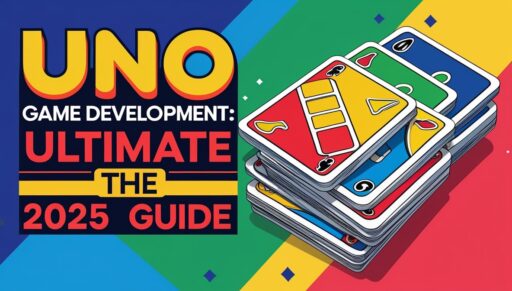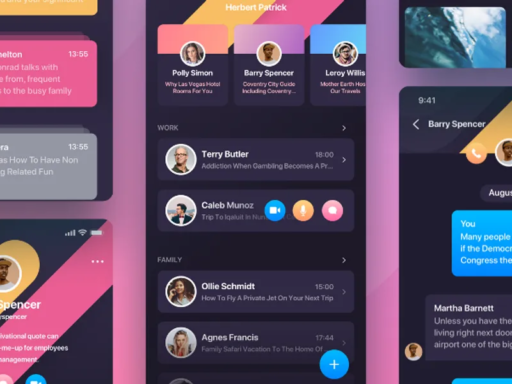Introduction: Why Develop an UNO Game in 2025?
UNO has stood the test of time as one of the most popular card games worldwide. From family gatherings to intense multiplayer online sessions, UNO has maintained a universal appeal. As mobile gaming continues to evolve, developers have the opportunity to innovate and bring fresh experiences to this beloved card game.
In this guide, we’ll walk through the process of UNO game development in 2025, covering the latest technology, design trends, and strategies for building a successful UNO game app. Whether you’re a seasoned developer or just starting, this guide provides expert insights into how to create a modern UNO game that engages players and stands out in the market.
Key Insights:
Trends in mobile game development for 2025
Building multiplayer functionality
UI/UX principles for card games
Monetization strategies
1. Understanding UNO Game Mechanics and Core Gameplay
To create a successful UNO game app, it’s vital to understand the game’s basic mechanics. Whether you’re designing a digital version of the classic game or adding new twists, the core principles remain unchanged.
Game Rules Recap:
Objective: The goal of UNO is to be the first player to reach 500 points. Points are earned by being the first to get rid of all your cards in each round.
Card Types: UNO cards come in four colors (red, yellow, green, blue) with numbers from 0 to 9. Special cards include Skip, Reverse, Draw Two, Wild, and Wild Draw Four.
Gameplay Mechanics: Players take turns matching a card from their hand with the card on top of the discard pile. Action cards introduce a layer of strategy, changing the direction of play, skipping players, or making others draw cards.
Digital Translation:
For mobile developers, the game mechanics should translate seamlessly to digital interfaces. Consider factors like user interface (UI) clarity and game speed to replicate the physical game’s flow.
2. Choosing the Right Technology Stack for UNO Game Development
The technology stack you select will determine the performance, scalability, and user experience of your UNO game. Here are some modern tools and frameworks to consider for creating your UNO app:
Game Engines:
Unity: A versatile and popular game engine for 2D games, Unity is excellent for building mobile UNO apps that work seamlessly across Android and iOS.
Godot: A free and open-source engine, Godot is another great option, known for its user-friendly interface and ease of use for 2D games like UNO.
Backend Infrastructure:
For real-time multiplayer functionality and user management, you need a reliable backend:
Photon Engine: Popular for real-time multiplayer games, Photon allows players to interact smoothly in real time.
Firebase: Google’s Firebase offers a solid backend solution with real-time database syncing, authentication, and messaging.
Programming Languages:
C#: Unity’s primary programming language.
GDScript: Godot’s scripting language, which is similar to Python and is great for building 2D games quickly.
3. Creating Multiplayer Functionality in UNO
UNO is most fun when played with friends or other players. Implementing multiplayer functionality is essential for success in 2025. Here’s how to approach it:
Real-Time Multiplayer:
Players expect a smooth multiplayer experience where the game state is updated in real-time. Consider these features:
Lobby Creation and Management: Players should be able to create or join a lobby, invite friends, or match with random opponents.
Matchmaking: Use an algorithm to pair players based on their skill level or preferences for a balanced experience.
Game Synchronization: Implement real-time synchronization to ensure all players see the same game state, preventing any gameplay discrepancies.
Turn-Based Gameplay:
UNO is a turn-based game, meaning the actions of one player should be recorded and executed in a sequence. The digital version needs to handle turn transitions smoothly, signaling when it’s a player’s turn and ensuring other players can only play when it’s their turn.
Anti-Cheating Mechanisms:
In an online game, maintaining fairness is paramount. Implement server-side validation to ensure that no players can manipulate their hands, actions, or game state.
4. Designing a Seamless User Interface and Experience
The digital version of UNO should be easy to play, visually appealing, and intuitive. Here are key UI/UX tips for building your game’s interface:
Simplicity is Key:
The core mechanics of UNO are simple, so your UI should reflect that. Avoid cluttering the screen with unnecessary elements. Focus on:
Card display: Players should clearly see their hand and the discard pile.
Action indicators: Special actions like Wild Cards should be highlighted to ensure players understand their impact.
Minimalist Design: Keep the design clean, using vibrant colors to represent the four suits, while maintaining consistency in fonts, card designs, and animations.
Card Animations:
Smooth animations add to the visual appeal of the game. Consider card-drawing effects, smooth transitions between turns, and satisfying feedback when players perform actions like playing a card or using a Wild Card.
Sound Effects and Music:
Incorporating subtle sound effects for card placement, wild card actions, and winning celebrations will enhance the user experience. Ambient background music can also provide a relaxing atmosphere.
5. Monetization Strategies for Your UNO Game
Building an app is only half the battle; monetizing it effectively is equally important. Here are some strategies you can use to generate revenue:
In-App Purchases (IAP):
Offer cosmetic items like card designs, unique backgrounds, or special animations that users can purchase.
Ads:
Rewarded Ads: Offer players the option to watch an ad in exchange for in-game currency or power-ups.
Interstitial Ads: These can appear between rounds or when players transition between different screens, but avoid disrupting gameplay too much.
Subscription Model:
Offer a premium version of the game that provides features like:
Ad-Free Experience
Exclusive Themes
Early Access to New Features
6. Testing and Quality Assurance
Testing is essential to ensure a bug-free, enjoyable experience for players. Focus on:
Functional Testing: Ensure game mechanics, such as the rules, card functionality, and multiplayer interactions, work correctly.
Performance Testing: Test on various devices to ensure smooth gameplay, especially during real-time multiplayer sessions.
User Testing: Get feedback from real players to fine-tune the UI, UX, and overall game design.
Conclusion: The Future of UNO Game Development
As mobile gaming continues to grow, so too does the potential for developing new, exciting digital versions of classic games like UNO. With the right combination of technology, design, and marketing, your UNO game app can become a hit in 2025. Keep the player experience at the forefront and continually update your game to keep it fresh and engaging.







